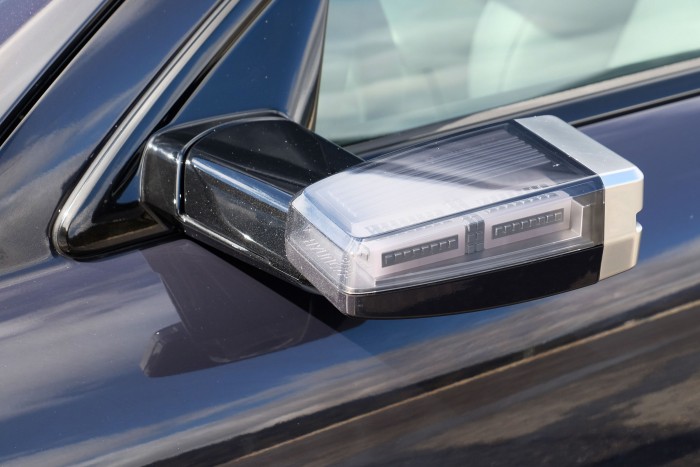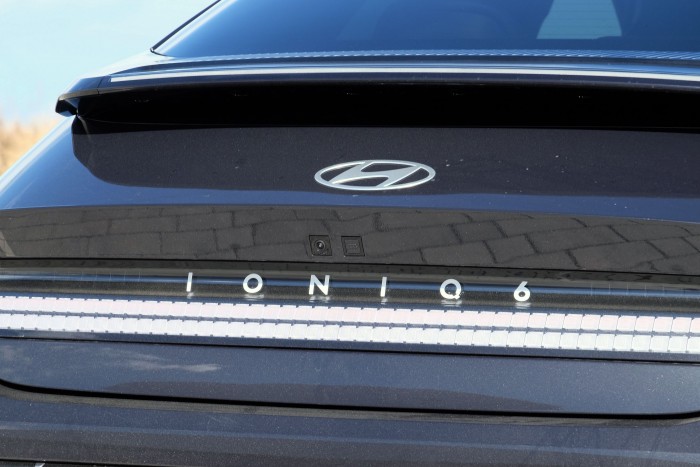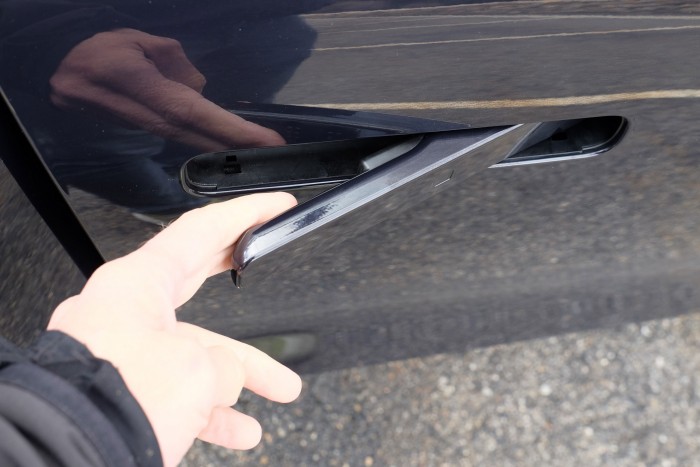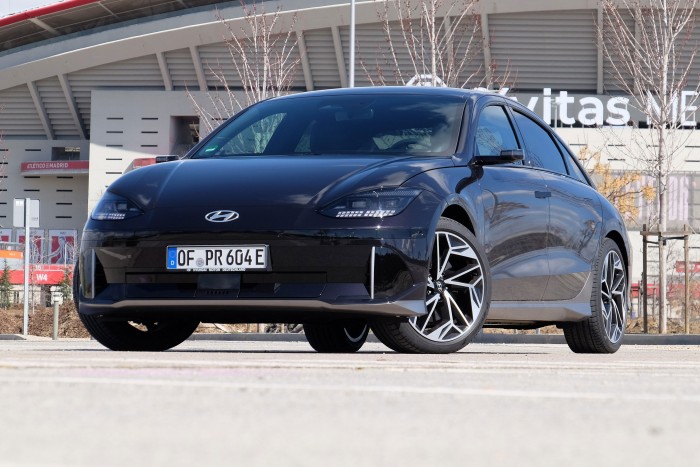The Ioniq 6 is very different from what we’re used to from the majority of electric cars. Not a big, long, chunky potato, but a classic — in the sense of a four-door — low-built, tall, car-shaped model. In order for the SUV to be attractive to many even in the midst of madness, the Koreans put a lot of effort into the design. The car, bordered by curves and curves, is particularly distinctive from the rear, where when staring at the details reminiscent of the Porsche 911 wing, even the image of the Tatra T 603 may flicker for a moment.
But the appearance has not only an aesthetic purpose, it also has a function, which is underlined by the streamlined “Streamliner” design language. With numerous rounded details, streamlined rims, air curtains, lockable air intakes, and a completely flat floor, the Ioniq 6 boasts a coefficient of drag of 0.21, which is exceptionally good. In the case of electric cars, this is especially important if someone wants economical operation even at highway speeds.
Like a big gloomy insect
streamliner
Although by streamline we mean mostly locomotives, railroad trains, and of course cars and caravans that were primarily manufactured in America between the 1930s and 1950s, designed to be very streamlined, the predecessor still came from Germany and had a less catchy name. By far, it was called: Schienenzeppelin. The strange propeller-driven train set a speed record of 230 km / h between Berlin and Hamburg in 1931. Later, newer, newer, faster and more streamlined cars appeared all over the world, but the design craze did not avoid household appliances either. Now, with the design of the Hyundai Ioniq 6, they’re back to those streamlined, curved shapes.

Streamliner from 1936. Source: Wikipedia.org / Posted by Utrechts Archief
The Insect’s body length, or keflorum – everyone sees it differently – is 4855 mm, – about 20 cm longer than the Ioniq 5 – 1880 mm wide and 1495 mm high, with a wheelbase of 2950 mm.
While I have so far only found a camera-equipped exterior rearview mirror in the Honda e, Audi Q8 e-tron and now the Hyundai Ioniq6, only Honda so far has something I think I can live with. The worst was Audi’s solution, which showed the outside world on an oddly shaped surface affixed to the surface of the door trim, while Honda’s solution seemed to be the most usable yet with large displays placed close to a real mirror.

External rear view camera in a transparent cover
Fortunately, Hyundai also opted for this design, with large screens well placed for the possibilities. Of course, everyone will be looking for the mirror outside the window for a long time to come, and every time they are disappointed that there is only a well-designed camera, counteracting a headwind.
In order not to cross other road users, the auxiliary lines support the driver in determining where to enter the car and where not to be when changing lanes. And if you find another car in the blind spot, it indicates that. Theoretically, you can certainly get used to it, but at the moment a traditional mirror provides a lot more information for me, somehow it’s easier to put other cars in space with it than it is on a screen. Well, its air resistance is definitely inferior to that of a camera with a smaller surface area.

Ionic 6
Speaking of air resistance, another part of the car that has been amazingly honed for this purpose is the door handle. By default, it is located in the plane of the box, but if necessary, it protrudes and a thin stick can be grabbed and the door can be opened with it. There is no magic inside, you can get out by simply pulling on the usual door opening tab. In addition, the brand logo has also been renewed, and it looks as if it was simply flattened, it barely protrudes from the plane of the body panel.

You have to hold it really well, or your hand will slip off it
Another signature detail of the car is the sea of \u200b\u200bthe Ioniq 5’s already recognizable square light units. I think this worked amazingly well on the Ioniq5, but here the visuals just don’t add up for me. That means, in addition to curved and streamlined shapes, square pixels. Anyway, they are great in their own right, and there are plenty of them – you can count more than 700 of them for those with such inclinations – in the headlight, in the taillight, in the lower sensors in the front, but they are also in the interior of the car, In the decorative elements of the air intake grilles, in the center console indicators, and also in the center of the steering wheel.
This is what the Ioniq 6 looks like in Hyundai’s factory video:
The video starts after the ad












































